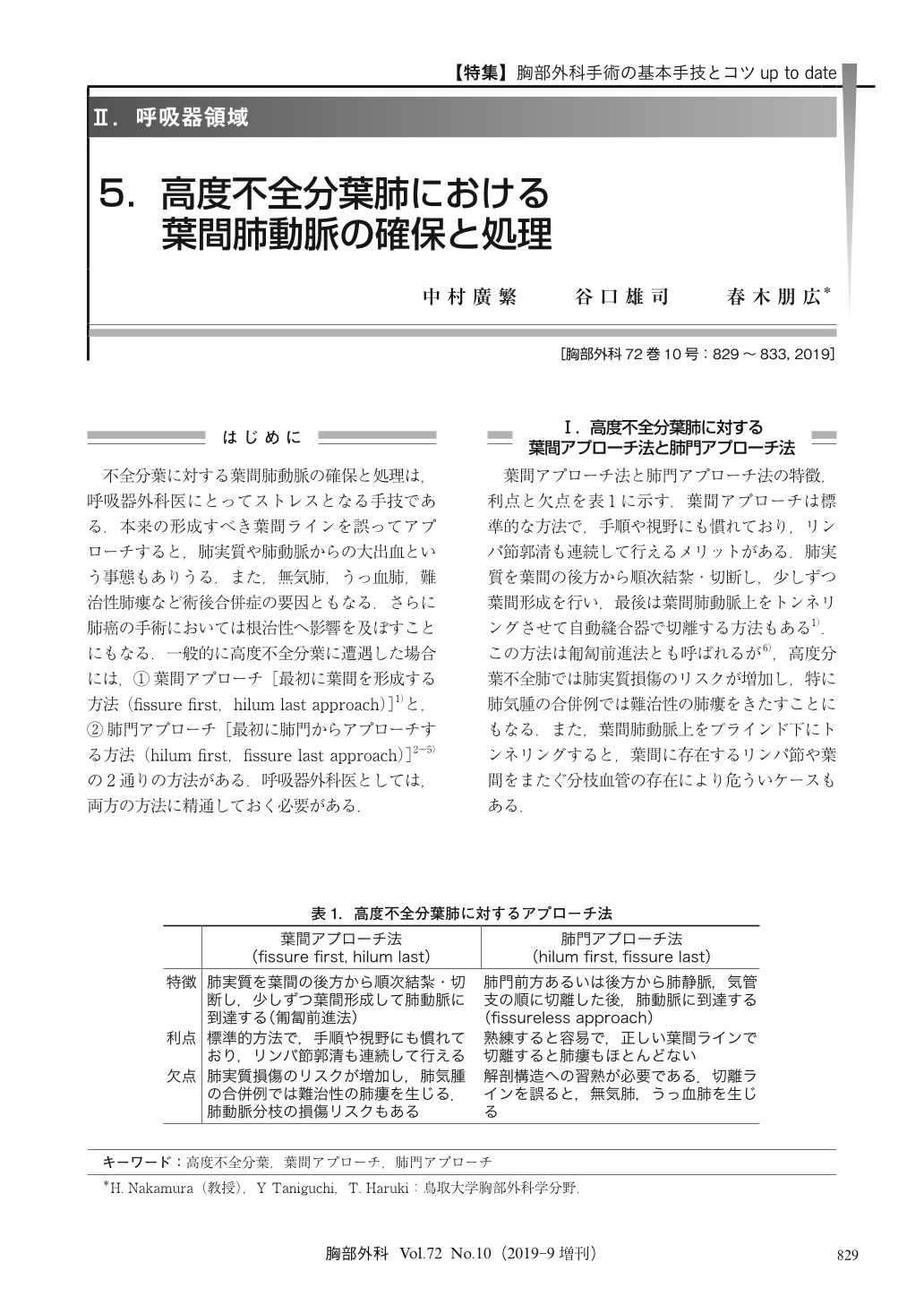Japanese
English
- 有料閲覧
- Abstract 文献概要
- 1ページ目 Look Inside
- 参考文献 Reference
不全分葉に対する葉間肺動脈の確保と処理は,呼吸器外科医にとってストレスとなる手技である.本来の形成すべき葉間ラインを誤ってアプローチすると,肺実質や肺動脈からの大出血という事態もありうる.また,無気肺,うっ血肺,難治性肺瘻など術後合併症の要因ともなる.さらに肺癌の手術においては根治性へ影響を及ぼすことにもなる.一般的に高度不全分葉に遭遇した場合には,①葉間アプローチ[最初に葉間を形成する方法(fissure first,hilum last approach)]1)と,②肺門アプローチ[最初に肺門からアプローチする方法(hilum first,fissure last approach)]2~5)の2通りの方法がある.呼吸器外科医としては,両方の方法に精通しておく必要がある.
There are 2 surgical approaches to secure and treat interlobar pulmonary artery in severe insufficient interlobar fissure of the lung. One is an interlobar approach which is called “fissure first technique”.This approach is standard, but sometimes difficult to secure interlobar artery safely. So, lung parenchyma injury and accidental bleeding from the pulmonary artery become troublesome problems. On the other hand, hilar approach without contacting to interlobar fissure which called “hilar first technique” is very useful to avoid lung parenchyma injuries. There are some knack and pitfalls in every lobe of the lung. The key of this approach is to be familiar with the anatomical position of pulmonary artery running by confirming preoperative 3-dimensional computed tomography (3D-CT). In the final step of this technique cutting the interlobar line exactly is more important to prevent atelectasis and congestion of residual lung. It is very important for thoracic surgeons to know the details of both approaches in the surgical treatment of severe insufficient interlobar fissure of the lung.

© Nankodo Co., Ltd., 2019


